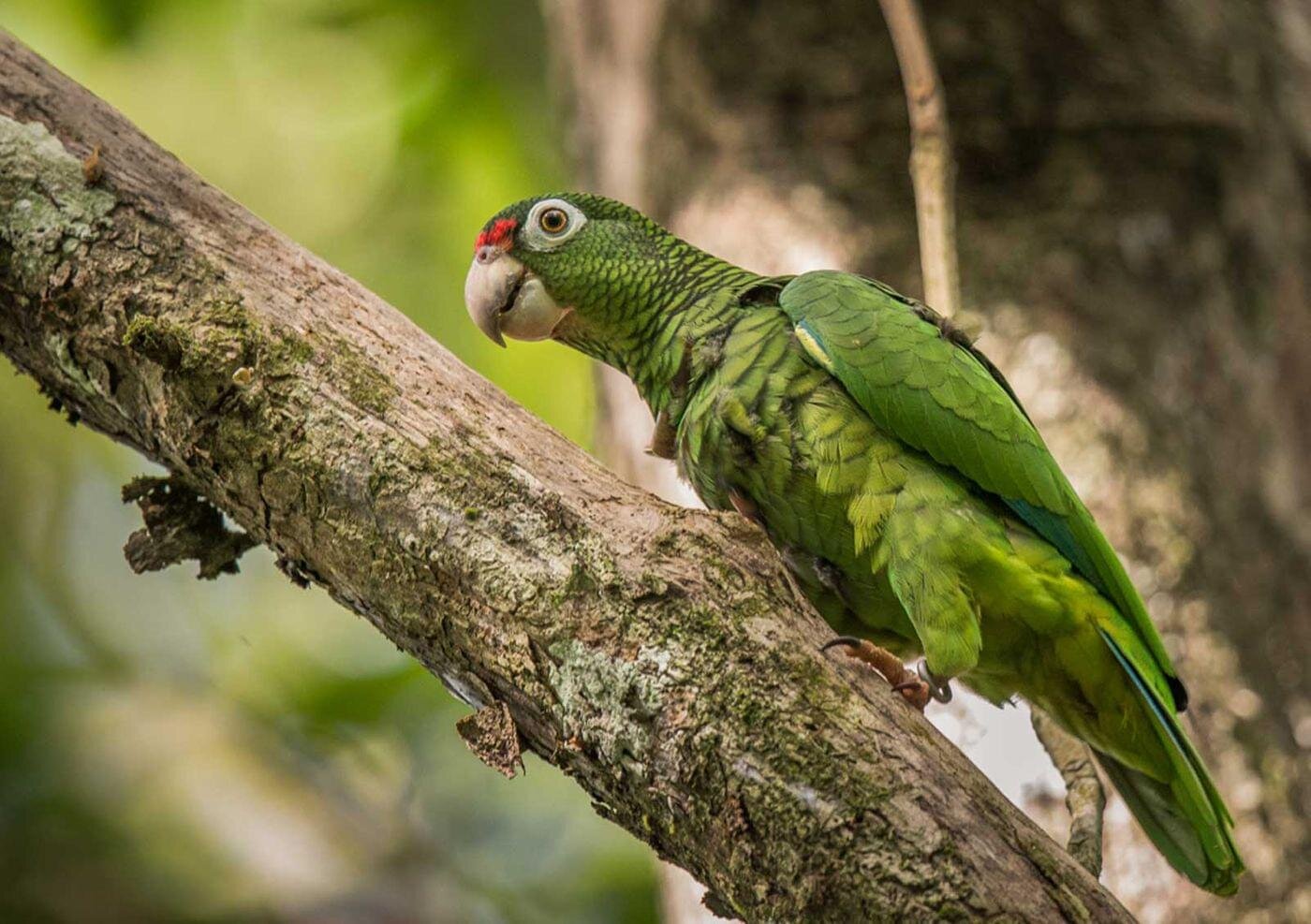Puerto Rican parrot (Amazona vittata) © Alfredo Irizarry.
My work as an ecologist for the National Wildlife Refuge Association, with extensive experience working in different areas of the natural sciences and for the state and federal government in Puerto Rico, is to support the U.S. Fish and Wildlife Service in their many, diverse projects and collaborative efforts with the local government.
In Puerto Rico, most of our work has been supporting the development of collaborative projects for the protection of endangered and threatened species and critical habitats beyond national wildlife refuge boundaries. For example, we contributed to the field work related to the assessment of the wild population of Puerto Rican parrots (Amazona vittata) after hurricane Maria. This was an acoustic monitoring project which sought to understand the distribution of the critically endangered Puerto Rican parrots after hurricane Maria hit the island on September 2017, and to identify potential routes of movement outside of the protected boundary (Rio Abajo State Forest). The Refuge Association wrote the proposal and applied for the permit requested by the Puerto Rico Department of Natural and Environmental Resources (DNER) to conduct field work in the State Forest. In addition, I organized field trips to set and retrieve the recorders in the field, followed-up, and shared progress reports, and fulfilled administrative needs related to the project. The Refuge Association had a key role in this project in all aspects which included supporting the fieldwork, as well as serving as an administrator and liaison with DNER, Sieve Analytics (acoustic recording company), and USFWS.
Varronia bellonis by Dr. Martin A. Hamilton
I also supported a couple other projects. One was the Varronia bellonis project, in which I provided spatial data needed for the development of habitat models for this endemic and endangered shrub. For another project, the removal of the dam in the Rio Grande de Arecibo, I wrote and edited informative fact sheets regarding the aquatic wildlife and the importance of the project and organized the first meeting between USFWS and the local municipality. Work also involved helping to conduct interviews with fishermen and other users of the river as part of a research of the University of Puerto Rico,. In addition, we worked in the revision of the Environmental Conservation Online System to assess the status of the incentive programs in private lands. Our role was to double-check the status of those projects and accomplishments that are still active in this tracking system.
Field trip with DNER and USFWS botanists, project leader from the KEW Royal Botanical Garden, and students from the University of Puerto Rico to survey areas of Varronia bellonis in the Susua/Maricao State Forests. (Photo: Dr. Martin A. Hamilton)
In support of the Caribbean National Wildlife Refuge Complex, the Refuge Association organized a one-week National Association for Interpretation (NAI) Training to support environmental education in Cabo Rojo, Laguna Cartagena, Vieques and Culebra National Wildlife Refuges.
Currently, I am writing (as the first author) the Puerto Rico Breeding Bird Atlas, a publication of the USDA Forest Service in collaboration with U.S. Fish and Wildlife Service.
Our work in Puerto Rico is diverse, all in support of wildlife conservation. Your support to the National Wildlife Refuge Association allows us to hire professional staff that can provide technical and administrative support to the National Wildlife Refuge System and adjoining lands to help protect and conserve critical habitats and endangered species.
Written by Jessica Castro-Prieto, PhD, The National Wildlife Refuge Association’s Caribbean Wildlife Specialist.




